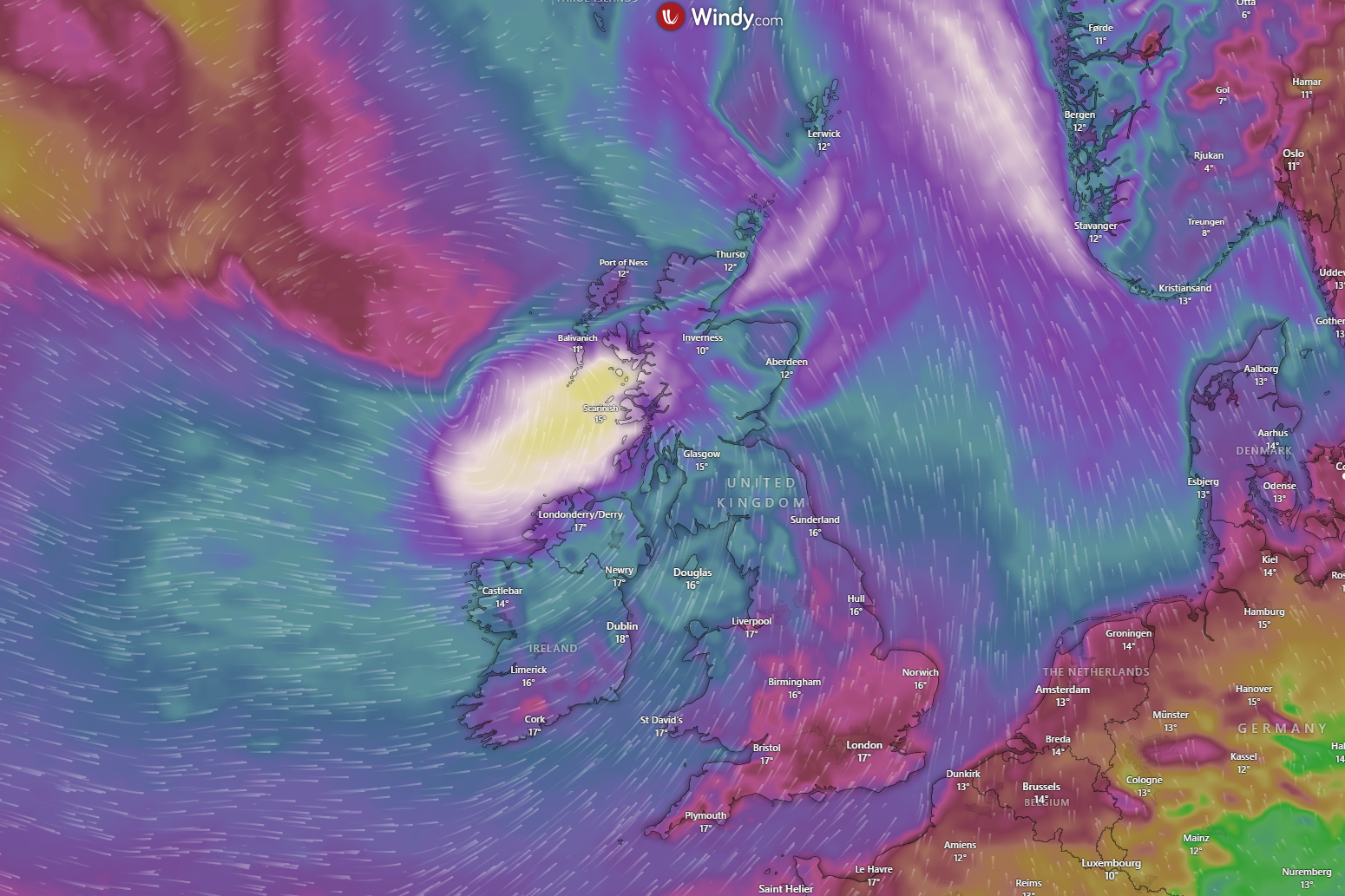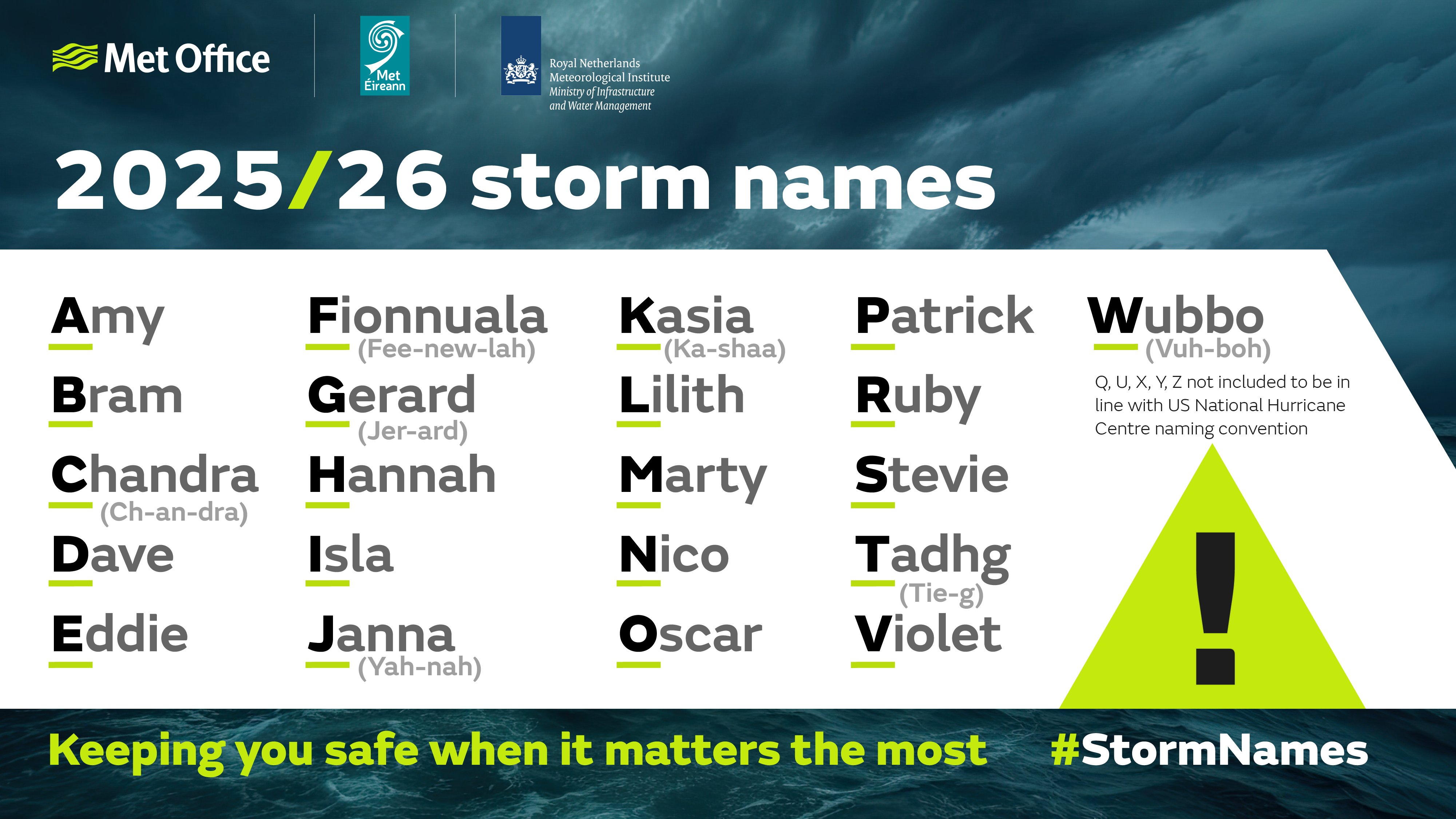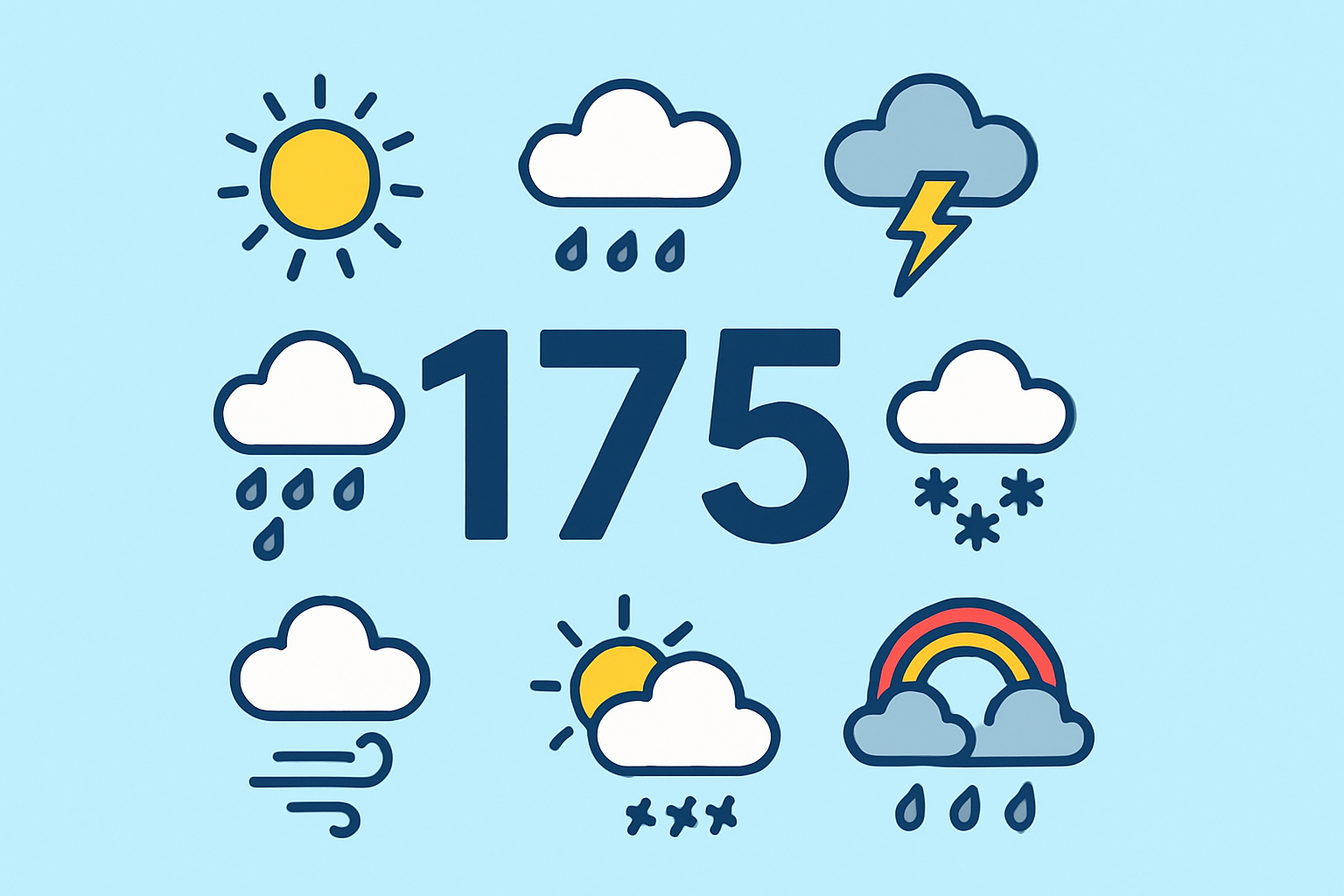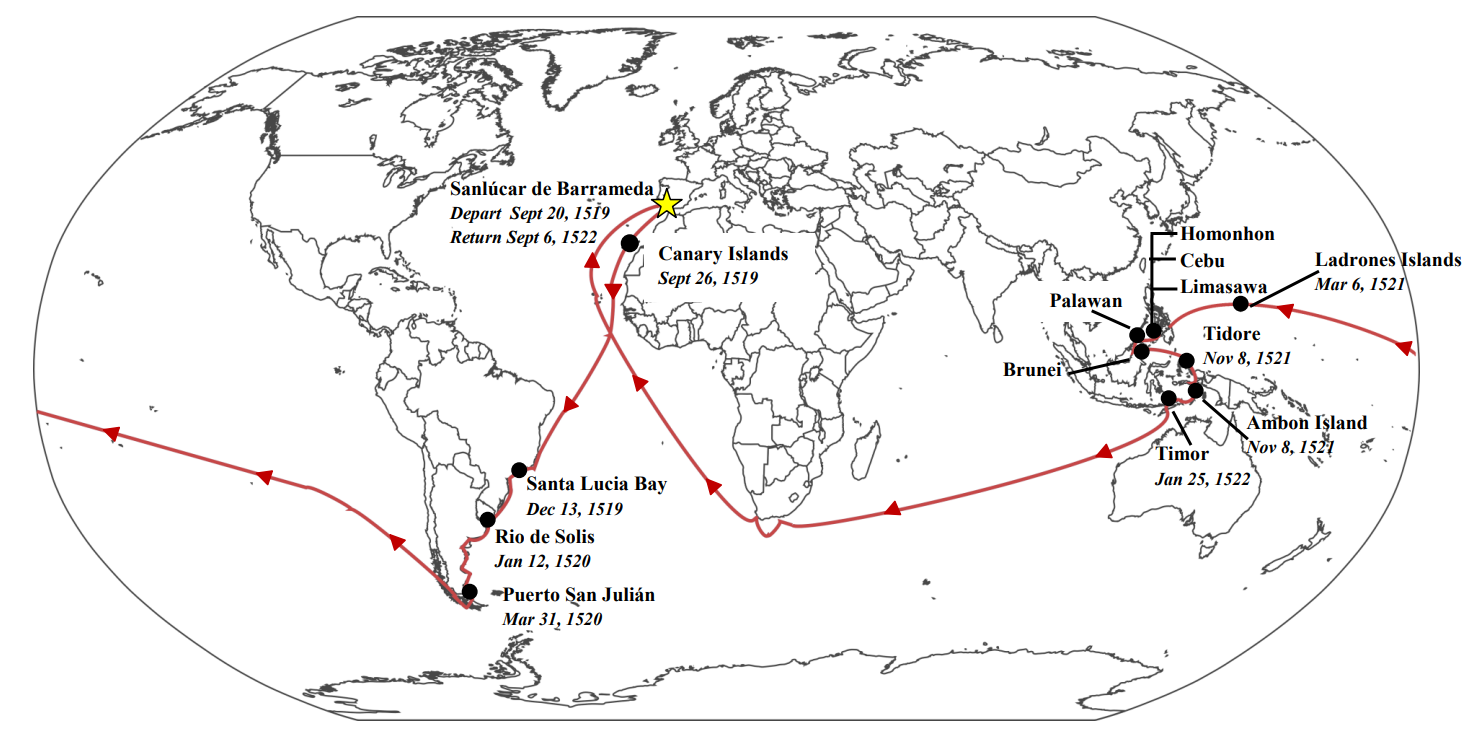

El Niño and Magellan’s Round-the-World voyage
Five hundred years ago, on 27 April 1521, Portuguese explorer Ferdinand Magellan met a sticky end following a battle with islanders in the Philippines. They had taken exception to his determination to make them subjects of the King of Spain. At that time, he was about halfway on his voyage around the World. However, according to research by Dr Scott Fitzpatrick (North Carolina State University) and Dr Richard Callaghan (University of Calgary), he probably only ended up there because of the weather…
A fleet of five ships, under the charge of Magellan, left Sanlúcar de Barrameda in southwest Spain on 20 September 1519. By the time they arrived in the Philippines, around 18 months later, one of these vessels, the Santiago, had been wrecked in a storm off Argentina, and another, the San Antonio, had abandoned Magellan and gone home. The Concepción and the Trinidad (Magellan’s ship) were damaged and never left the Philippines. Only one, the Victoria, reached the fleet’s original goal of the Spice Islands and later went on to complete that first-ever circumnavigation of the World. It eventually returned to Spain in September 1522 with only 18 survivors from the 237 who had started.
In the sixteenth century, sailing demanded courage, determination and a little luck. Wind direction was particularly important, as ships were much more restricted in the directions that they could sail relative to the wind. So, Magellan made use of north-easterly winds to sail southwest, past the Canary Islands and down the east coast of Brazil and Argentina (Image 1).
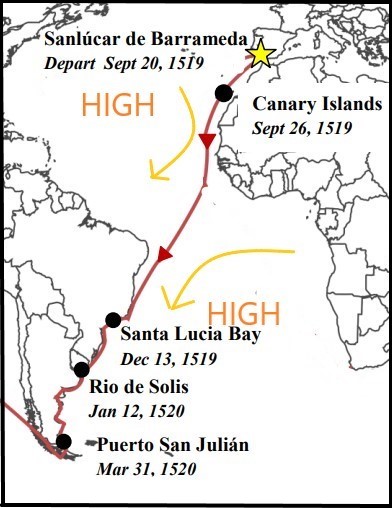
Image 1: Magellan’s outbound route showing locations of sub-tropical high-pressure areas and associated winds (yellow arrows)
The further south he travelled, the more chance he had of meeting westerly winds and storms, sometimes enhanced by katabatic squalls coming off the South American landmass. One such storm destroyed the Santiago, at Puerto San Julian in the southern hemisphere in the autumn of 1520.
Getting around the southernmost tip of South America, Cape Horn, was problematic in itself. At a latitude of 56⁰ South, it is well within the area that sees almost continuous strong westerly winds blowing around Antarctica (Image 2). Since sailing into such a headwind was effectively impossible for the sixteenth-century ships, an alternative was highly desirable. Magellan’s discovery of the Straits of Magellan was a particularly important feature of his voyage, although sailing through it was scarcely easier than trying to round Cape Horn.
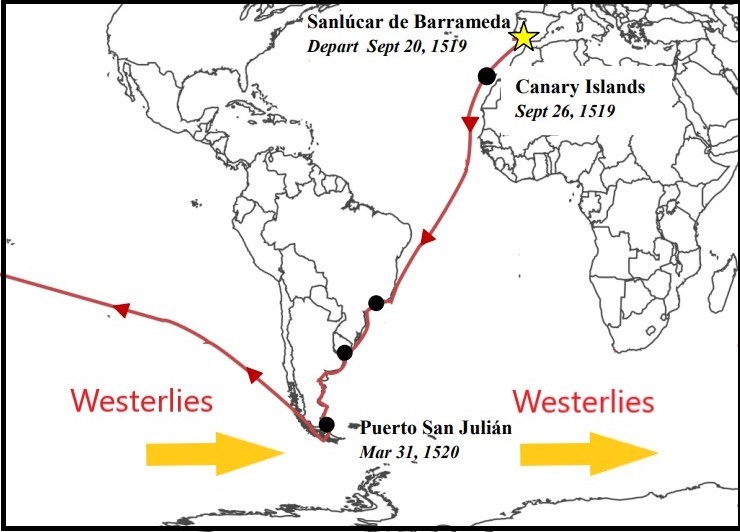
Image 2: Magellan’s route including his passage through the Straits of Magellan, near the southern tip of South America. The yellow arrows show the strong westerly winds blowing, unhindered by land, around Antarctica.
Having made the treacherous transit of the Strait in October and November of 1520, Magellan set off across the Pacific with favourable southeast winds. What no one knew was that an El Niño event was in full swing. This meant that the equatorial easterlies, which normally stretched across the whole of the Pacific, would be weaker and even reversed in direction in the western half of the ocean (Image 3). To keep the wind at his back, Magellan would have been forced to steer a more northerly route. This may well be what led to his ill-fated arrival at the island of Cebu in the Philippines, 1,500 kilometres north of his intended destination, the Spice Islands.
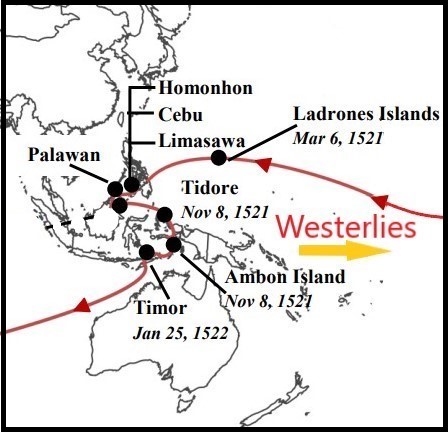
Image 3: Magellan’s arrival in the Philippines (Cebu, Homonhon, Limasawa), to the north of the equatorial westerlies seen when El Nino is occurring, and the subsequent route of the Victoria to the Spice Islands (Ternate, Tidore, Ambon) and then westward to the Indian Ocean.
Victoria, the only vessel left from the original five, eventually left the Spice Islands in January 1522. The ship crossed the Indian Ocean, rounding Cape Aghulas (the southernmost tip of Africa) and sailed north to reach Sanlúcar de Barrameda in September 1522 (Image 4).
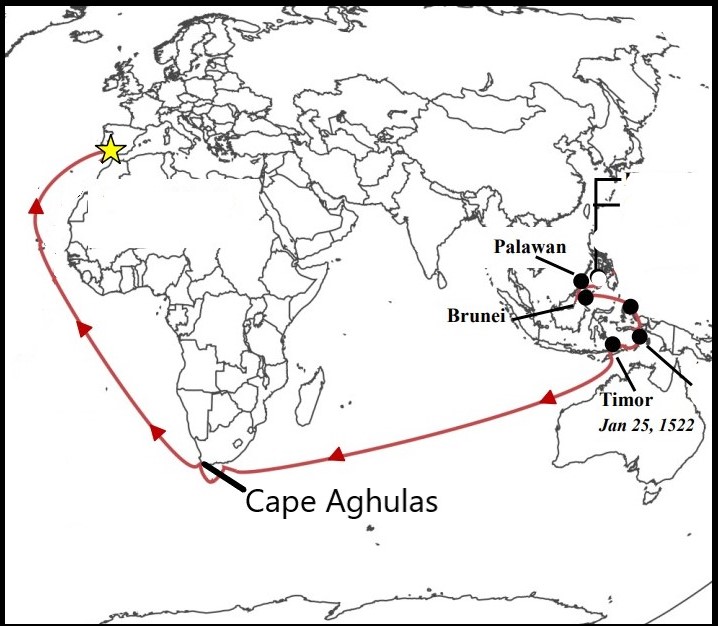
Image 4: Victoria’s route home from the Spice Islands.
So, ironically, the first man said to have circumnavigated the Globe only made it halfway, and few remember the names of the 18 survivors who completed the trip. And none of them knew anything about the El Niño Southern Oscillation!

